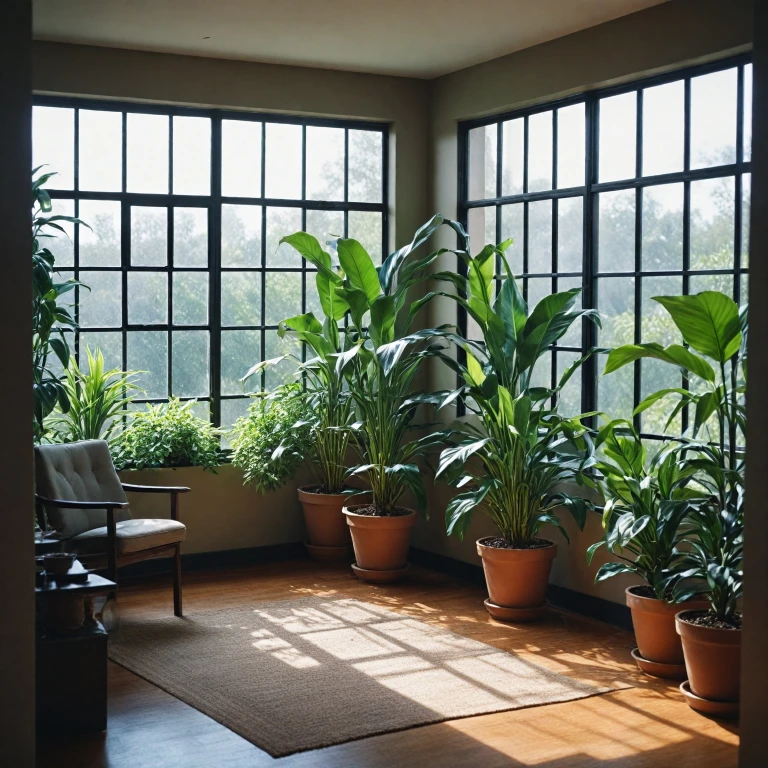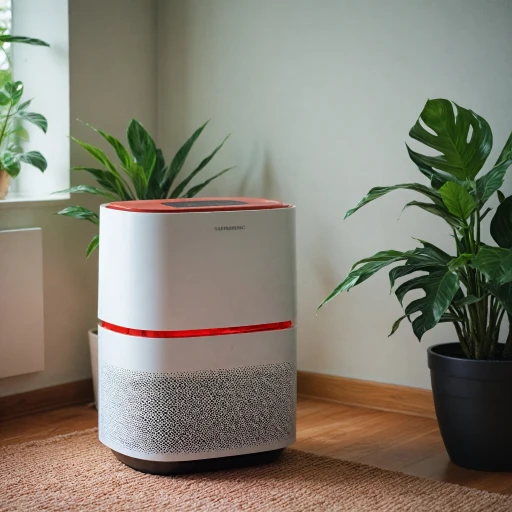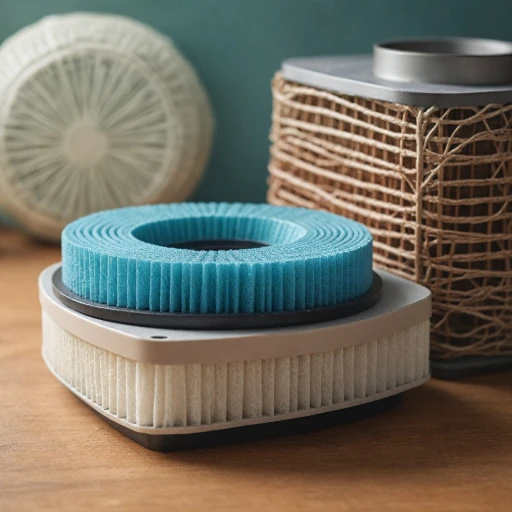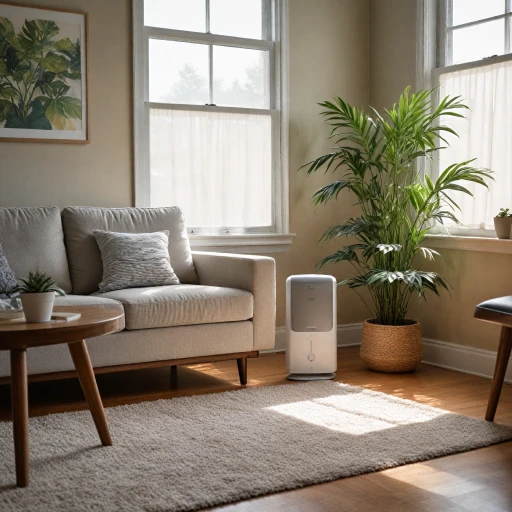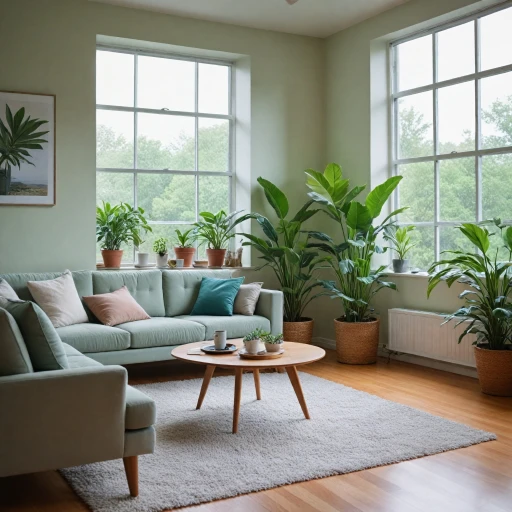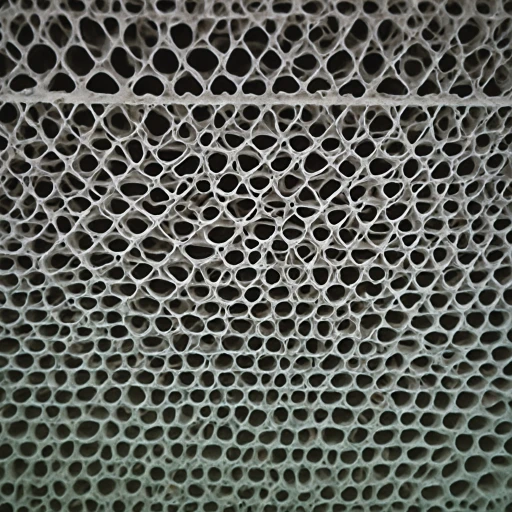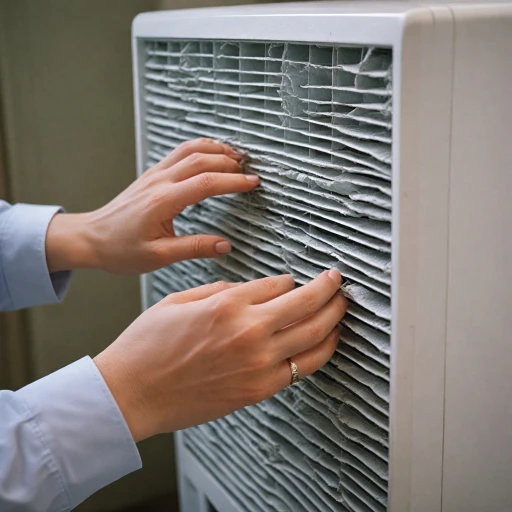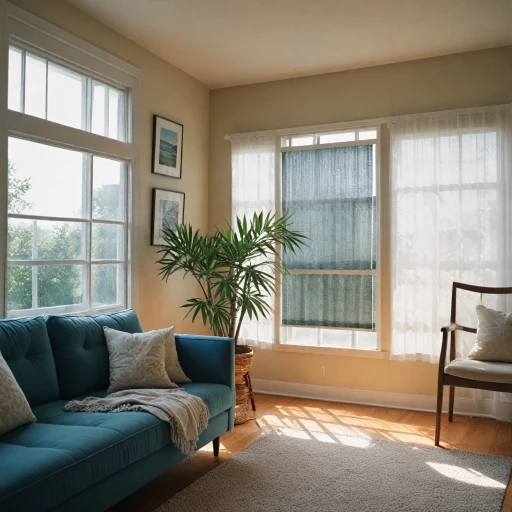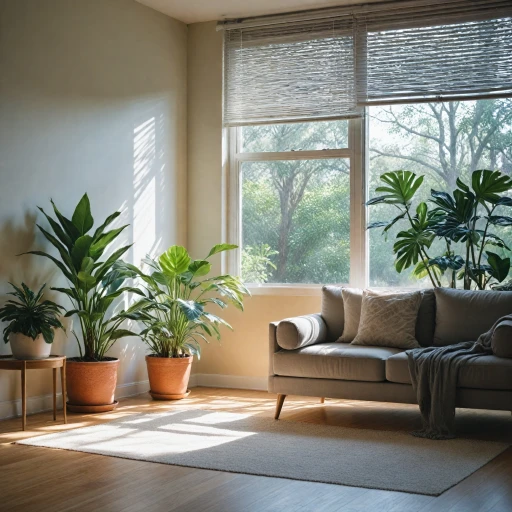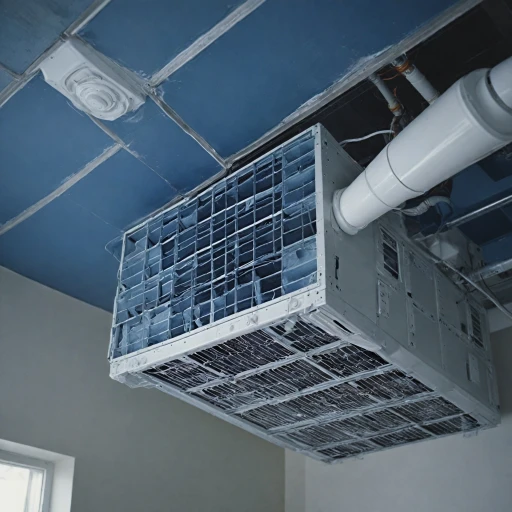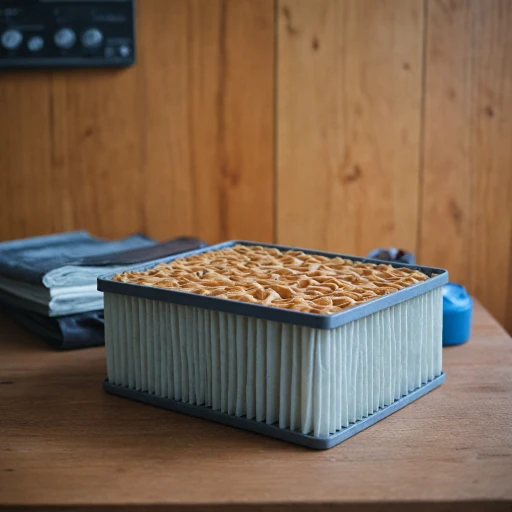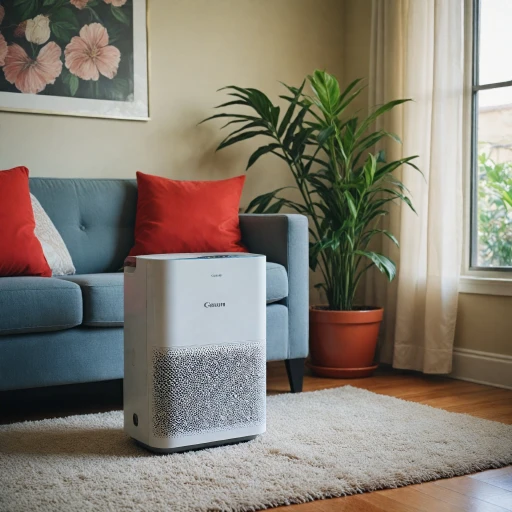
Understanding Living Air Purifiers
An Introduction to Living Air Purifiers
Living air purifiers have emerged as a popular choice among those seeking to improve indoor air quality. These devices are designed to enhance the cleanliness of the air in your home by removing various particles, including viruses, bacteria, and tobacco smoke, while creating an environment that promotes healthier living. Unlike traditional air purifiers, which rely primarily on mechanical filters like HEPA filters, living air purifiers often incorporate additional technologies such as ozone, ionization, and other eco-friendly methods. This combination of features can make a significant difference in addressing air quality concerns in spaces that deal with high levels of pollutants. Such purifiers offer a blend of functionality and efficacy, addressing not only visible pollutants but also invisible and microscopic threats that can impact health. As air passes through the purifier, filters capture particles, while technologies like ozone treatment help neutralize odors and harmful contaminants. When evaluating living air purifiers, brands like Alpine Classic, Austin Air, and Molekule Air are well-regarded. It's crucial to consider factors such as the type and size of your space, noise levels, and specific needs like allergen removal or smoke reduction. Opting for a unit with a strong fan or a proven HEPA filter can also help ensure maximum performance. For further insights on improving indoor environments, you can explore different methods of air conditioning and purification in order to achieve the best air quality in your living space here.Key Benefits of Living Air Purifiers
Unveiling the Advantages of Living Air Purifiers
Living air purifiers are gaining traction for their ability to significantly enhance indoor air quality. These devices are not just about filtering air; they bring a host of benefits that make them a worthy investment for any home.
Improved Air Quality
One of the primary benefits of living air purifiers is their ability to improve air quality by removing harmful particles. Equipped with advanced filters like HEPA and classic HEPA, these purifiers effectively capture dust, pollen, and even tobacco smoke. This ensures that the air you breathe is cleaner and healthier.
Reduction of Allergens and Pollutants
Living air purifiers are designed to reduce allergens and pollutants, making them ideal for individuals with allergies or respiratory issues. By filtering out particles and pollutants, these devices help in minimizing the presence of allergens such as pet dander and dust mites.
Elimination of Odors and Smoke
These purifiers are also effective in eliminating odors and smoke. Whether it's from cooking, tobacco, or other sources, living air purifiers can neutralize unpleasant smells, leaving your home smelling fresh and clean.
Combatting Viruses and Bacteria
In today's world, the ability to combat viruses and bacteria is crucial. Living air purifiers, especially those with ozone and UV technology, can help reduce the presence of these harmful microorganisms, contributing to a healthier indoor environment.
Energy Efficiency and Quiet Operation
Modern living air purifiers are designed to be energy-efficient, ensuring that they do not significantly increase your energy bills. Additionally, many models operate quietly, making them suitable for use in bedrooms and living areas without causing disturbances.
For more insights on enhancing indoor air quality, you can explore effective purification solutions that complement the use of living air purifiers.
How Living Air Purifiers Work
Operational Dynamics of Living Air Purifiers
Living air purifiers are an intriguing option for those looking to improve indoor air quality. Unlike traditional air purifiers, these devices utilize natural elements to cleanse the air of harmful particles and pollutants.- Filter Integration: Most living air purifiers come equipped with HEPA filters, classic hepa, or other advanced filtration systems such as alpine living and classic models. These filters are highly effective at trapping particles like tobacco smoke, allergens, and even some viruses and bacteria, ensuring you have access to clean air.
- Activated Carbon and Ozone: Some purifiers also incorporate activated carbon to remove odors and chemical vapors. The addition of an ozone generator, like those found in ecoquest and austin air models, works by releasing ozone, which reacts with pollutants in the air to neutralize them. However, when considering ozone, be cautious about its potential impact on indoor air quality.
- Natural Airflows: With silent fans that help circulate air, these purifiers mimic natural airflow patterns within a room. This not only helps in distributing the purified air effectively but also ensures the maximum collection of airborne particles by the filters.
- High-Efficiency Performance: Some brands like molekule air have introduced innovative technology that works on particles at a molecular level, offering high-efficiency air cleaning capabilities tested against various pollutants.
Choosing the Right Living Air Purifier for Your Home
Factors to Consider for Your Indoor Environment
Choosing the right living air purifier for your home involves assessing several crucial factors which ensure that you select a device suited to your specific needs, improving the indoor air quality effectively.- Room Size: The area you're looking to filter plays a significant role. Most purifiers specify the room size they can handle, with options like the Alpine Living Air or the Austin Air Cleaners often suitable for various sized spaces. Large open rooms might require a device with a high CADR (Clean Air Delivery Rate) to cover space efficiently.
- Type of Contaminants: Consider the type of pollutants you need to target. For instance, HEPA filters are excellent for capturing small particles, like dust and pet dander. Conversely, ozone purifiers target smoke and odors. If smoke from tobacco or cooking is prevalent, options like the Air Classic may be worthwhile, due to their high efficiency in removing smoke.
- Allergies and Health Concerns: If allergies or respiratory issues are a concern, look for air purifiers that effectively eliminate viruses, bacteria, and pollen. Devices such as the Classic HEPA or Molekule Air are commonly endorsed for their superior filtration of allergens and microbes.
- Filter Replacement: Regular maintenance, such as changing HEPA filters or cleaning pre-filters, ensures optimal performance. Check the availability and cost of replacement filters, like those for the EcoQuest or Classic Hepa models, to budget appropriately.
- Noise Levels: Some purifiers operate with a fan, which can create noise. Consider models with a "quiet" or "sleep" mode, especially if you'll use the device in a bedroom or an office space where minimal disturbance is ideal.
- Energy Efficiency: Consuming less power translates to savings on electricity bills. Devices characterized by "Eco" badges often imply high energy efficiency, making them eco-friendly choices.
- Style and Aesthetics: While function is paramount, the appearance might also matter. With options ranging from the sleek white units to the understated designs of classic models, like the Max and Alpine Living, there are choices to suit different decor tastes.
- Cost and Warranty: Consider both the initial cost of the air purifier and the longevity ensured by warranty terms. Investing upfront in a well-tested product with good reviews often pays dividends.
Maintenance and Care Tips
Ensuring Optimal Performance and Longevity
Proper maintenance and care of your living air purifier is vital to ensure that it performs at its best, providing you with the clean air you need. Unlike mechanical systems, living air purifiers, which often utilize natural processes, require specific attention. Here’s a breakdown of some essential maintenance tips:- Regular Cleaning: Dust and particles can accumulate on the outer surfaces and internal components like filters. Regularly wipe down the exterior with a damp cloth and clean the filters as recommended by the manufacturer. This is especially important for models that are exposed to tobacco smoke or environments with high levels of particles.
- Monitor Filter Status: Whether your purifier uses classic HEPA, air classic, or any other type of filter, check them periodically for wear and tear. In some cases, filters need to be replaced to maintain air quality. Models like the Alpine Living Air and Austin Air offer high filter efficiency and should be monitored as per their specific guidelines.
- Avoid Blockages: Ensure that the air inlet and outlet are free from obstruction. This helps in maintaining the optimal performance of the fan and ensuring the unit can function to its max potential.
- Check Ozone Levels: If your device has an ozone generation feature, ensure it is operating within safe levels. While ozone can help in breaking down viruses and bacteria, excessive ozone can be hazardous.
- Regular Service: Similar to other air purifiers like EcoQuest or Molekule Air, it's good practice to schedule regular service checks. Some companies provide free shipping for repair services, adding convenience to your maintenance routine.
Common Misconceptions and FAQs
Common Myths About Living Air Purifiers
A lot of misconceptions surround living air purifiers, which can lead to confusion when deciding to use one. Here, we address some prevailing myths to help clarify any doubts.
Myth 1: Living Air Purifiers Generate Harmful Ozone
There is a common belief that living air purifiers produce hazardous levels of ozone. While some air purifiers do generate ozone as a byproduct, the best models have been rigorously tested to ensure they adhere to safety standards. It’s essential to differentiate between types and opt for products labeled as safe for indoor air quality improvement.
Myth 2: They Only Remove Large Particles
Another misconception is that living air purifiers are only suitable for filtering large particles. In reality, many purifiers, especially those equipped with HEPA filters, effectively capture smaller particles, such as viruses and bacteria, ensuring clean air. They work alongside classic filters to provide comprehensive air purification.
Myth 3: All Living Air Purifiers Are Quite Noisy
Some believe that air purifiers, due to their internal fans, are inevitably loud. However, high-quality models, such as those by Ecoquest or Austin Air, are designed to operate quietly while maintaining efficacy, allowing for peaceful environments, whether in living rooms or bedrooms.
Myth 4: Maintenance Is Too Complicated
When considering the maintenance of living air purifiers, it's often thought to be burdensome. However, regular upkeep primarily involves simple tasks like replacing air filters, which is straightforward with most models offering user-friendly maintenance guidelines. Regularly maintaining your purifier ensures its longevity and optimal performance.
Frequently Asked Questions
- Do living air purifiers eliminate tobacco smoke? – Yes, many models, including those with HEPA filters, are effective at reducing tobacco smoke particles, thereby improving indoor air quality.
- Are there any living air purifiers offering free shipping? – Numerous brands and retailers provide free shipping options for these products. It’s worth checking offers from trusted providers.
- Can they help against viruses and bacteria? – Most air purifiers with multi-stage filters, including HEPA, are efficient at trapping and removing airborne pathogens.
- Is a classic HEPA filter better than an advanced system like Alpine Living? – It depends on specific needs. Traditional HEPA filters are reliable, while advanced systems might incorporate additional technologies for enhanced purification.
